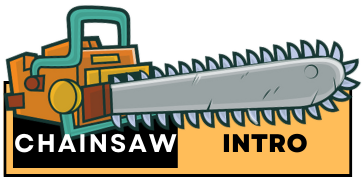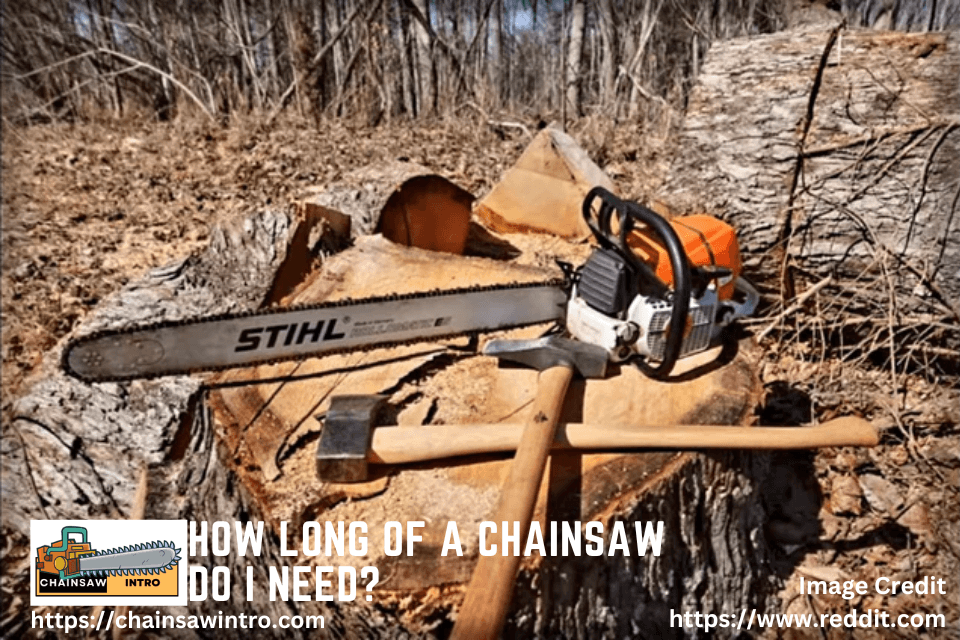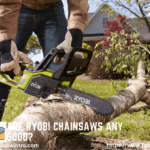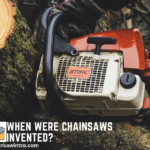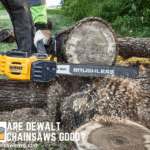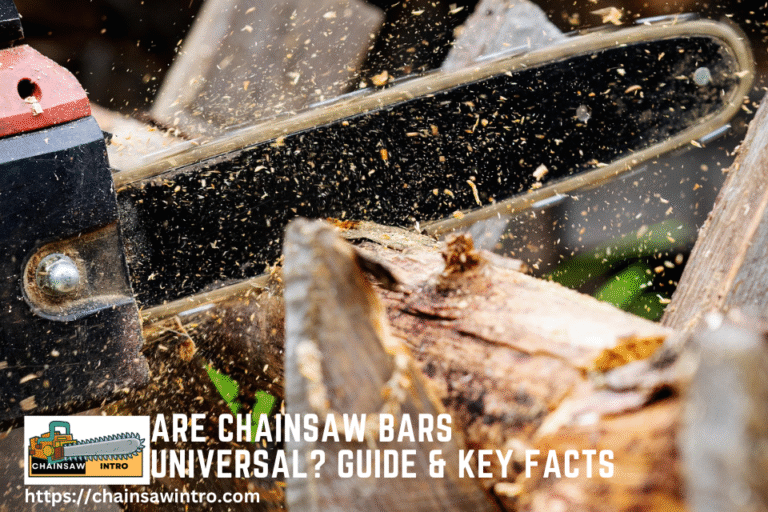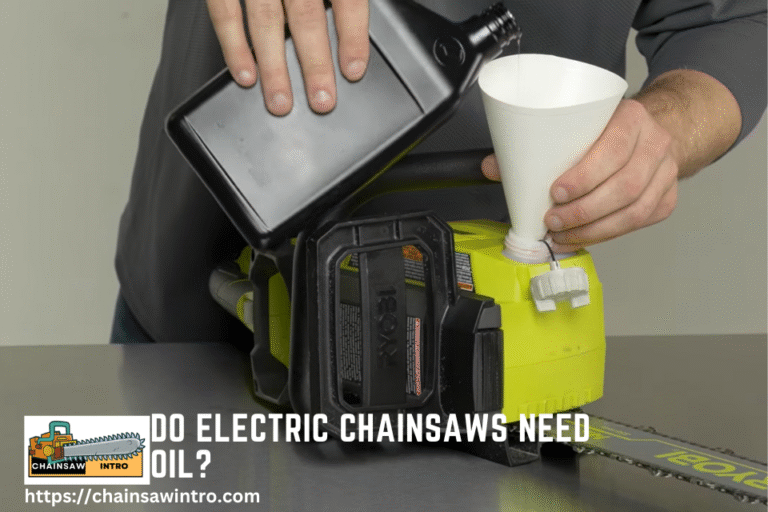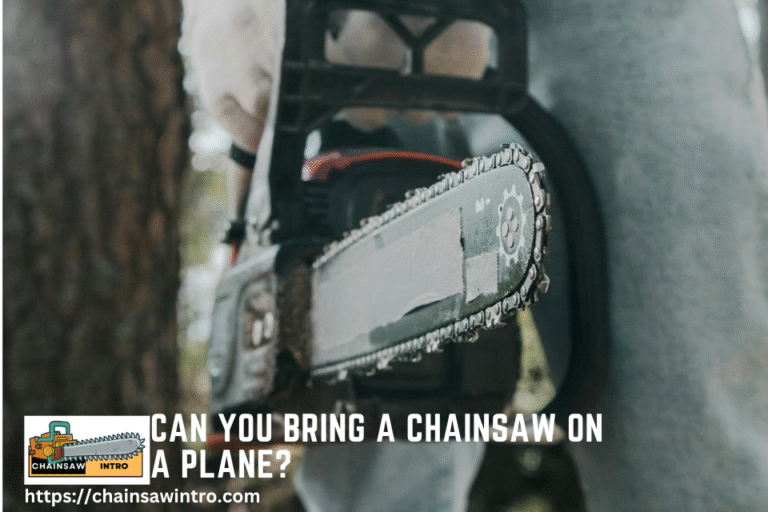Choosing the right chainsaw size is one of the most important decisions you’ll make when buying a saw. A chainsaw that is too short may not handle larger logs effectively, while one that is too long can be heavy, unsafe, and difficult to control. The length of a chainsaw refers to the guide bar length—the part of the saw that the chain rotates around. Most chainsaws range between 12 inches and 24 inches, though professional models can exceed 36 inches. So, how long of a chainsaw do you need? The answer depends on your intended use, experience level, and safety considerations.
Here’s a quick guide to help you choose the right sized chainsaw for your needs:
14″ or less: This size is good for light duty jobs like trimming branches or cutting small logs. It’s also easy to handle and maneuver, making it a good choice for beginners.
16″ – 18″: This size is ideal for most homeowners who need a versatile saw for various projects around the house and yard. It has enough power to tackle tougher jobs like cutting down trees, but is still manageable for most people.
Understanding Chainsaw Bar Length: Why It Matters
The bar length of a chainsaw determines its cutting capacity and suitability for different jobs. Ranging from 10 to 36 inches or more, the bar length dictates the maximum diameter of wood the saw can cut in a single pass—typically up to twice the bar length for optimal performance, though most cuts are limited to the bar’s length for safety and efficiency. For example, a 16-inch bar can comfortably cut logs up to 12-14 inches in diameter, per 2025 Popular Mechanics reviews. Longer bars provide greater reach but are heavier and harder to control, increasing fatigue and kickback risks, as noted in OSHA guidelines. Choosing the right bar length ensures efficient cutting, reduces strain on the saw, and enhances safety, making it a critical decision for users.
In general, a chainsaw can cut a tree or log twice the bar length in diameter. For example, a 16-inch chainsaw can cut through a log up to 32 inches wide with the proper technique.
However, cutting capacity isn’t the only factor—weight, control, and user safety also play crucial roles.
Best Chainsaw Size for a Homeowner, Rancher, Farmer, or Landowner
Recommended Bar Lengths for Common Tasks
The ideal bar length depends on the tasks you plan to tackle. Here’s a breakdown of recommended sizes based on 2025 insights from TechGearLab and ArboristSite:
- 10-14 Inch Bars: Perfect for light tasks like pruning branches, trimming small trees (up to 8 inches in diameter), or cutting firewood. Ideal for homeowners using battery-powered models like the DeWalt DCCS670 (12-inch) or Ego CS1400 (14-inch). Lightweight and maneuverable, these are best for beginners or urban settings.
- 16-18 Inch Bars: The most versatile size for homeowners and light commercial use, suitable for cutting firewood, felling small-to-medium trees (up to 14 inches), and storm cleanup. Models like the Stihl MS 271 (16-inch) or Husqvarna 455 Rancher (18-inch) excel here, per Home Depot reviews.
- 20-24 Inch Bars: Designed for heavier tasks like felling larger trees (up to 20 inches) or cutting thick logs. Gas-powered saws like the Echo CS-590 (20-inch) or battery models like the Ego CS2005 (20-inch) are recommended. These require more skill due to increased weight and power.
- 24+ Inch Bars: Reserved for professional logging or large-scale tree felling (trees over 20 inches). Models like the Stihl MS 661 (28-inch) are used by pros but are overkill for most homeowners, increasing kickback risks, per Reddit’s r/Chainsaw.
For most users, a 16-18 inch bar strikes the best balance of versatility, power, and control, covering 80% of residential tasks.
Factors to Consider When Choosing Chainsaw Length
Your Cutting Needs
- If your main task is pruning and small yard work, a 12–14 inch bar will be more than enough.
- For routine firewood cutting and small tree felling, a 16–18 inch chainsaw is the most practical choice.
- For large tree removal or milling, a 20-inch or longer chainsaw may be necessary.
Experience Level
- Beginners are advised to start with a shorter bar length, usually 16 inches or less, as these are lighter, easier to handle, and safer to control.
- Longer bars require more skill and strength to manage safely.
Safety Concerns
- Longer bars are more prone to kickback, a dangerous event where the saw jerks suddenly toward the operator.
- A chainsaw that’s too long for the task can increase fatigue and reduce control, raising the risk of accidents.
Power Source and Engine Size
- Gas-powered chainsaws can handle longer bars thanks to their stronger engines.
- Electric and battery-powered chainsaws usually come with shorter bars (12–16 inches) for light to medium tasks.
- Attaching a bar that’s too long for the engine can strain the motor and reduce efficiency.
Physical Strength and Comfort
- Larger chainsaws are heavier, often weighing 12–20 pounds or more.
- Consider how long you’ll be using the saw at a time. A heavy chainsaw can cause arm fatigue, especially for new users.
Expert Recommendation: What Size Chainsaw Do You Need?
For most homeowners and casual users, a 16- to 18-inch chainsaw is the best all-around choice. It offers enough power and reach to handle common tasks like firewood cutting, small tree felling, and storm cleanup, while still being manageable for most users.
If you only plan on light-duty yard work such as pruning or trimming branches, a 12–14 inch chainsaw is perfect. On the other hand, if you are an experienced operator dealing with large trees or frequent heavy-duty cutting, a 20–24 inch chainsaw may be the right fit.
The following list describes some of the most common uses for a 20 inch chainsaw.
| Small to Medium-Sized Trees | You can use a 20 inch chainsaw to fell small to medium-sized trees, cut up firewood and trim large branches from trees. However, if you are trying to fell large trees, a chainsaw with a longer length may be necessary. |
| Pruning | A 20 inch chainsaw is perfect for trimming the branches of trees and cutting up bushes. Chainsaws with lengths of 24 inches or more are capable of handling pruning tasks as well. |
| Limbing | Limbing involves removing the branches from felled trees. If you are felling small to medium-sized trees, a 20 inch chainsaw can be used for this task. However, limbing larger trees requires a longer chainsaw. |
The following list describes some of the most common tasks for different chainsaw lengths.
| Chainsaw Bar Size | Working Possibilities |
| Under 16 Inches | Chainsaws with a length under 16 inches are primarily used to cut small branches. They are also excellent for pruning, as well as limbing, small trees. |
| 18 Inches | Chainsaws with a length of 18 inches are great for felling small to medium-sized trees and cutting up firewood. |
| 20 Inches | A 20 inch chainsaw is perfect for small to medium-sized trees, as well as pruning, limbing and trimming large branches. |
| 22 Inches | Chainsaws that are 22 inches long can be used for any domestic task that requires a chainsaw, and are also great for professional work. |
| 24 Inches | Chainsaws with a length of 24 inches or more are good for felling medium to large trees, well as commercial purposes like cutting down logs into smaller pieces of wood so sale at local markets! |
So when choosing what type to get its always important consider your needs before anything else. They vary greatly in to their intended purpose which don’t let yourself become limited by only looking online first rather out stores ones come recommended by others who have already gone through this process themselves .
Chainsaw Type and Bar Length Compatibility
Different chainsaw types support varying bar lengths:
- Gas-Powered Chainsaws: Models like the Husqvarna 455 Rancher (55.5cc) support 16-20 inch bars, ideal for heavy tasks. Larger engines (70cc+) can handle 24-36 inch bars for professional logging.
- Battery-Powered Chainsaws: Models like the Ego CS2005 (56V) or Makita XCU04 (36V) work best with 14-20 inch bars due to battery limitations. Longer bars drain batteries faster, reducing runtime (20-40 minutes per charge), per Amazon reviews.
- Corded Electric Chainsaws: Saws like the Oregon CS1500 (15-amp) typically use 16-18 inch bars, balancing power and corded constraints. Longer bars require heavy-duty cords (12-gauge), per 2025 TechGearLab.
Always check the manufacturer’s specifications to ensure the saw’s engine or motor can support the bar length without strain, as overstressing can lead to premature wear.

How Do I Know How Long a Chain I Need on My Chainsaw?
When it comes to chainsaws, the size of the chain is just as important as the size of the bar. The bar is what determines how long your chainsaw chain needs to be. While there are a few ways to determine this, the most accurate way is by measuring from the tip of the nose to the center of the drive link on the bottom of the bar.
This will give you half of the needed measurement. To get the other half, simply measure from where your thumb rests when holding the saw at mid-grip to where your little finger rests. Once you have both measurements, add them together and then round up to nearest even number.
This final measurement is your ideal chain length for that specific saw and bar combination. Keep in mind that while it’s important to have a properly sized chain, having one that’s too long isn’t necessarily a bad thing. In fact, having a bit of extra length can come in handy if you need to make a particularly deep cut or want more cutting power.
However, an excessively long chain can be difficult to control and may cause kickback more easily than a shorter one.
Top Chainsaw Recommendations by Bar Length for 2025
Based on 2025 reviews from Popular Mechanics and Home Depot, here are top models for different bar lengths:
- 12-14 Inch: DeWalt DCCS670 (60V, 12-inch) for lightweight pruning; Greenworks 40V (14-inch) for small firewood tasks.
- 16-18 Inch: Stihl MS 271 (16-inch) for versatile homeowner use; Oregon CS1500 (18-inch) for corded power.
- 20-24 Inch: Echo CS-590 (20-inch) for heavy-duty gas cutting; Ego CS2005 (20-inch) for cordless performance.
- 24+ Inch: Stihl MS 661 (28-inch) for professional logging, though not recommended for casual users.
Tips for Choosing the Right Bar Length
To select the ideal chainsaw bar length, follow these tips from 2025 sources like FireAndSaw.com and YouTube tutorials:
- Assess Your Tasks: List the typical wood sizes you’ll cut. For mixed tasks (pruning and firewood), a 16-18 inch bar is versatile.
- Start Small: Beginners should opt for 12-16 inch bars to build confidence and reduce risks.
- Check Power Compatibility: Ensure your saw’s engine or battery can handle the bar length. Consult the manual or manufacturer’s website.
- Consider Replacement Bars: Many saws support multiple bar lengths (e.g., 16-20 inches). Buy a shorter bar for lighter tasks to increase versatility.
- Test Comfort: Handle the saw in-store or rent one to ensure the weight and balance suit you, especially for longer bars.
- Maintain Properly: Keep the chain sharp and oiled to reduce strain on the saw, regardless of bar length. A dull chain increases kickback risks, per Stihl’s guides.
Conclusion
The right chainsaw bar length depends on your tasks, experience, and saw type. For most homeowners, a 16-18 inch bar offers the best balance of versatility, power, and control, handling pruning, firewood, and small tree felling. Beginners should stick to 10-14 inch bars for safety and ease, while professionals tackling large trees may need 20-24 inch bars or longer. Consider your saw’s power source, physical ability, and safety precautions when choosing. By matching the bar length to your needs and maintaining the chain properly, you’ll ensure efficient, safe cutting. Ready to choose your chainsaw? Pick the right bar length and tackle your projects with confidence in 2025!
Frequently Asked Questions
What Length of Chainsaw is Best?
There’s no definitive answer to this question – it depends on a number of factors, including the type of wood you’re cutting, the size of the tree, and your own personal preferences. In general, though, most people find that a chainsaw between 16 and 20 inches long is ideal for most purposes. If you’re cutting smaller trees or shrubs, a shorter chain might be better, while if you’re felling larger trees, a longer chain will give you more power and reach.
Ultimately, it’s up to you to decide what length of chainsaw is best for your needs.
How Long a Chain Saw Blade Do I Need?
The length of a chainsaw blade you need depends on the type of project you are doing. For smaller projects such as trimming trees and shrubs, a 12-inch chainsaw should be enough. For larger projects like cutting firewood or felling trees, an 18-inch chainsaw is recommended.
Are Longer Chainsaws Better?
As a general rule, the longer the length of your chainsaw is, the more powerful it will be. However, longer lengths make the chainsaw heavier and more difficult to use. Additionally, longer lengths allow you to cut larger trees and fell larger trees than shorter chainsaws. Chainsaws with lengths between 20 inches and 24 inches are best for domestic use, while chainsaws longer than 24 inches are better suited for professional work.
What is the Advantage of a Shorter Chainsaw Bar?
The advantage of a shorter chainsaw bar is that it is lighter and easier to maneuver, making it less tiring to use over long periods of time. It is also easier to control and allows for more accurate cuts when trimming or pruning trees or shrubs. Additionally, it is safer to use because the shorter length reduces the potential of kickback.
However, a shorter chainsaw bar will be less powerful and can only cut smaller trees, as well as small branches. Additionally, a shorter bar requires less power from the engine to operate, which can help extend the life of the engine.
Is a Bigger Chainsaw Better?
Yes and No. In order to understand if a bigger chainsaw is better, you first need to know what tasks you want to accomplish with it. As a general rule, larger chainsaws are better suited for cutting down trees that are either medium-sized or large. Smaller chainsaws, on the other hand, are better for cutting up smaller branches, clearing up fallen trees, and cutting firewood into sections small enough to fit in your fireplace.
However, the choice between a larger chainsaw and a smaller chainsaw ultimately depends on how much power you require to complete your task. If you are looking for more power, a bigger chainsaw will likely be better. However, if you don’t need a lot of power, a smaller chainsaw will probably work just as well.
What size chainsaw is best for firewood?
For cutting firewood, a 16–18 inch chainsaw is ideal. It provides enough cutting capacity for most logs while remaining lightweight and easy to control for extended use.
Can a beginner use a 20-inch chainsaw?
While a beginner can use a 20-inch chainsaw, it’s generally not recommended. Longer bars are heavier and more prone to kickback, making them harder to handle safely. Beginners should start with a 14–16 inch chainsaw for better control.
How big of a tree can an 18-inch chainsaw cut?
An 18-inch chainsaw can cut through trees up to 36 inches in diameter using the proper cutting technique, though it’s most efficient on small to medium-sized trees.
What chainsaw length do professionals use?
Professional loggers and arborists often use chainsaws with bars 20 inches and above, sometimes reaching 36 inches or more, depending on the size of the trees they work with.
What size chainsaw do I need for small yard work?
For pruning, trimming, and light yard maintenance, a 12–14 inch chainsaw is perfect. It’s compact, easy to handle, and safe for quick jobs around the house.
I’ve spent the past 10+ years working with chainsaws in forestry, landscaping, and firewood preparation. Along the way, I’ve gained certifications in chainsaw operation and safety and built extensive experience with trusted brands like Stihl, Husqvarna, and Oregon. I enjoy sharing my knowledge through step-by-step guides, tool reviews, and safety advice so others can get the most from their chainsaws while staying safe on every job.
